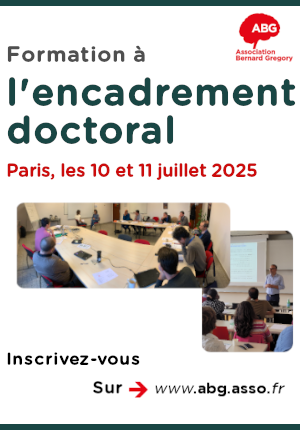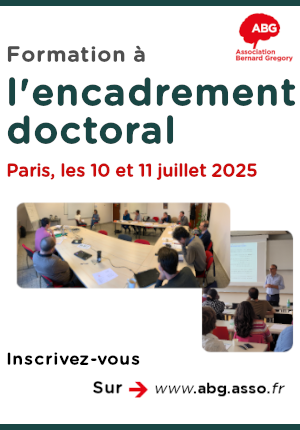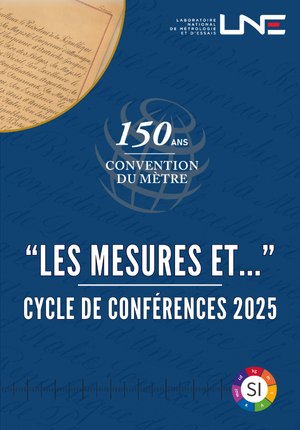Évaluation des revêtements de surface nanométriques sur les électrodes positives à haute densité énergétique pour batteries lithium-ion. // Evaluation of nanoscale surface coatings on high energy density positive electrodes for lithium-ion batteries.
| ABG-132664 | Thesis topic | |
| 2025-06-26 | Public/private mixed funding |
CEA Paris-Saclay Laboratoire d’étude des éléments légers
Saclay
Évaluation des revêtements de surface nanométriques sur les électrodes positives à haute densité énergétique pour batteries lithium-ion. // Evaluation of nanoscale surface coatings on high energy density positive electrodes for lithium-ion batteries.
- Chemistry
Chimie physique et électrochimie / Physique de l’état condensé, chimie et nanosciences / Stockage électrochimique d’énergie dont les batteries pour la transition énergétique / Défis technologiques
Topic description
Les oxydes lamellaires riches en nickel LiNi1-x-yMnxCoyO2 (NMC) et LiNi1-x-yCoyAlzO2 (NCA) sont des matériaux exceptionnels pour l’électrode positive des batteries au lithium grâce à leur grande capacité de stockage réversible. Toutefois, dans les conditions réelles d’utilisation, des réactions indésirables peuvent entraîner la dissolution des métaux de transition et la fracturation des électrodes, affectant ainsi leurs propriétés électrochimiques. Ces phénomènes sont associés à la présence d’acide fluorhydrique (HF) dans l’électrolyte, principalement due à la dégradation du sel LiPF6. Pour résoudre ces problèmes, des traitements de surface sont nécessaires pour protéger le matériau actif et améliorer les performances. Le projet EVEREST propose une méthode innovante, flexible et abordable pour créer des revêtements nanométriques inorganiques. Cette méthode repose sur une technique récente, l’électrofilage coaxial, qui permet de produire des nanofibres possédant une structure cœur-gaine bien définie. Nous proposons d'évaluer l'impact des paramètres de mise en forme des nanofibres sur la morphologie, les performances électrochimiques et le mécanisme sous-jacent. Les performances électrochimiques des matériaux revêtus et vierges seront comparées dans une demi-cellule avec Li métal comme contre électrode. Les processus redox, les mécanismes de transfert de charges et les modifications structurelles seront étudiés en mode operando grâce au faisceau synchrotron.
------------------------------------------------------------------------------------------------------------------------------------------------------------------------
------------------------------------------------------------------------------------------------------------------------------------------------------------------------
Nickel-rich layered oxides LiNi1-x-yMnxCoyO2 (NMC) and LiNi1-x-yCoyAlzO2 (NCA) are exceptional materials for the positive electrode of lithium batteries due to their high reversible storage capacity. However, under real conditions, undesired reactions can lead to the dissolution of transition metals and electrodes cracking, thus affecting their electrochemical properties. This phenomenon is linked to the presence of hydrofluoric acid (HF) in the electrolyte, mainly due to the degradation of the LiPF6 salt. To address this problem, surface treatments are needed to protect the active material and improve performance. The EVEREST project proposes an innovative, flexible, and affordable method for creating inorganic coatings at the nanoscale. This method is based on a recent technique, coaxial electrospinning, which allows the production of nanofibers with a well-defined core-sheath structure. For this project, we propose to evaluate the impact of nanofiber shaping parameters on morphology, electrochemical performance and the underlying mechanism. The electrochemical performances of the coated and the pristine positive electrodes will be compared in a half-cell with Li metal as a counter electrode. Redox processes, charge transfer mechanisms and structural modifications will be studied in the operando mode using the synchrotron radiation beam.
------------------------------------------------------------------------------------------------------------------------------------------------------------------------
------------------------------------------------------------------------------------------------------------------------------------------------------------------------
Pôle fr : Direction de la Recherche Fondamentale
Département : Institut rayonnement et matière de Saclay
Service : Service Nanosciences et Innovation pour les Materiaux, la Biomédecine et l’Energie
Laboratoire : Laboratoire d’étude des éléments légers
Date de début souhaitée : 01-11-2025
Ecole doctorale : Sciences Chimiques: Molécules, Matériaux, Instrumentation et Biosystèmes (2MIB)
Directeur de thèse : YAGOUBI Saïd
Organisme : CEA
Laboratoire : DRF/IRAMIS/NIMBE/LEEL
URL : https://iramis.cea.fr/pisp/said-yagoubi/
URL : https://iramis.cea.fr/en/nimbe/leel/
URL : https://www.ismo.universite-paris-saclay.fr/surfaces-interfaces-molecules-2d-materials-2/
------------------------------------------------------------------------------------------------------------------------------------------------------------------------
------------------------------------------------------------------------------------------------------------------------------------------------------------------------
Nickel-rich layered oxides LiNi1-x-yMnxCoyO2 (NMC) and LiNi1-x-yCoyAlzO2 (NCA) are exceptional materials for the positive electrode of lithium batteries due to their high reversible storage capacity. However, under real conditions, undesired reactions can lead to the dissolution of transition metals and electrodes cracking, thus affecting their electrochemical properties. This phenomenon is linked to the presence of hydrofluoric acid (HF) in the electrolyte, mainly due to the degradation of the LiPF6 salt. To address this problem, surface treatments are needed to protect the active material and improve performance. The EVEREST project proposes an innovative, flexible, and affordable method for creating inorganic coatings at the nanoscale. This method is based on a recent technique, coaxial electrospinning, which allows the production of nanofibers with a well-defined core-sheath structure. For this project, we propose to evaluate the impact of nanofiber shaping parameters on morphology, electrochemical performance and the underlying mechanism. The electrochemical performances of the coated and the pristine positive electrodes will be compared in a half-cell with Li metal as a counter electrode. Redox processes, charge transfer mechanisms and structural modifications will be studied in the operando mode using the synchrotron radiation beam.
------------------------------------------------------------------------------------------------------------------------------------------------------------------------
------------------------------------------------------------------------------------------------------------------------------------------------------------------------
Pôle fr : Direction de la Recherche Fondamentale
Département : Institut rayonnement et matière de Saclay
Service : Service Nanosciences et Innovation pour les Materiaux, la Biomédecine et l’Energie
Laboratoire : Laboratoire d’étude des éléments légers
Date de début souhaitée : 01-11-2025
Ecole doctorale : Sciences Chimiques: Molécules, Matériaux, Instrumentation et Biosystèmes (2MIB)
Directeur de thèse : YAGOUBI Saïd
Organisme : CEA
Laboratoire : DRF/IRAMIS/NIMBE/LEEL
URL : https://iramis.cea.fr/pisp/said-yagoubi/
URL : https://iramis.cea.fr/en/nimbe/leel/
URL : https://www.ismo.universite-paris-saclay.fr/surfaces-interfaces-molecules-2d-materials-2/
Funding category
Public/private mixed funding
Funding further details
Presentation of host institution and host laboratory
CEA Paris-Saclay Laboratoire d’étude des éléments légers
Pôle fr : Direction de la Recherche Fondamentale
Département : Institut rayonnement et matière de Saclay
Service : Service Nanosciences et Innovation pour les Materiaux, la Biomédecine et l’Energie
Candidate's profile
Master ou équivalent en sciences des matériaux
Apply
Close
Vous avez déjà un compte ?
Nouvel utilisateur ?
More information about ABG?
Get ABG’s monthly newsletters including news, job offers, grants & fellowships and a selection of relevant events…
Discover our members
 Groupe AFNOR - Association française de normalisation
Groupe AFNOR - Association française de normalisation  Ifremer
Ifremer  Institut Sup'biotech de Paris
Institut Sup'biotech de Paris 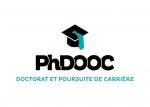 PhDOOC
PhDOOC  CASDEN
CASDEN 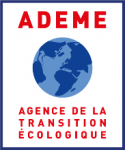 ADEME
ADEME  SUEZ
SUEZ  ONERA - The French Aerospace Lab
ONERA - The French Aerospace Lab  Aérocentre, Pôle d'excellence régional
Aérocentre, Pôle d'excellence régional  CESI
CESI  Laboratoire National de Métrologie et d'Essais - LNE
Laboratoire National de Métrologie et d'Essais - LNE  Tecknowmetrix
Tecknowmetrix 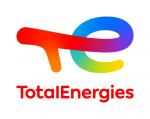 TotalEnergies
TotalEnergies  Nokia Bell Labs France
Nokia Bell Labs France  Généthon
Généthon  MabDesign
MabDesign  ASNR - Autorité de sûreté nucléaire et de radioprotection - Siège
ASNR - Autorité de sûreté nucléaire et de radioprotection - Siège  MabDesign
MabDesign 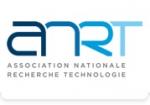 ANRT
ANRT
-
JobRef. 132696Montreal, CanadaMcGill University
Post-doctoral position in medicinal chemistry
Scientific expertises :Chemistry - Biochemistry
Experience level :Junior
-
JobRef. 132742Genève, Switzerland
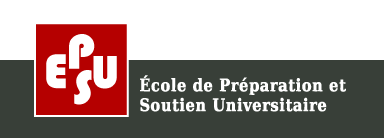 EPSU
EPSUProfesseur de Biologie UP à Genève
Scientific expertises :Biology - Biochemistry - Chemistry
Experience level :Confirmed

